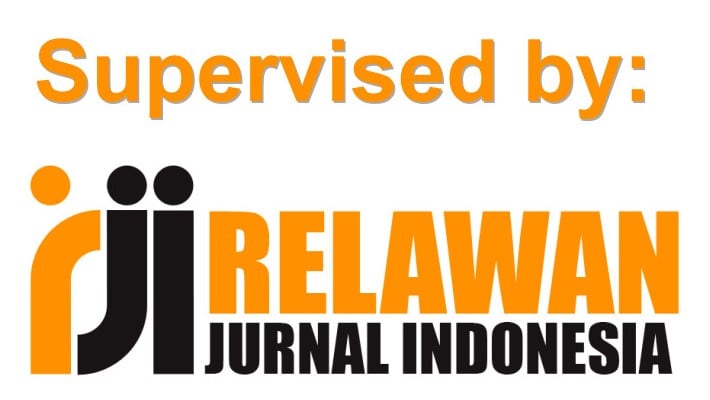Gambaran Kecanduan Gadget Anak Usia 9-12 Tahun
DOI:
https://doi.org/10.18592/jsi.v10i2.7296Abstract
The development of gadget is rapidly growing and started to be used by early child makes the usage of gadget increased and could issue an addiction. This study aims to see the description of gadget addiction in children age 9-12 years in Bandung. The sample technique used in this study is purposive sampling. Participant in this study is children age 9-12 years old in Bandung that is fit into the criteria that is using one or more gadget. The total amount of participant is 90 children who is permitted by parents to take part in the study. The measurement used in this study is a Digital Addiction Scale for Children (DASC). The result of this study shows that there is no gadget addiction in children age 9-12 years (significance 0.000 < α = 0,05), and there is no difference between boys and girls in the degree of gadget addiction (significance 0.418 > α = 0,05).References
Arnani, N. P. R., & Husna, F. H. (2021). Perbedaan Kecenderungan Adiksi Gadget Siswa Sekolah Dasar Ditinjau dari Jenis Kelamin. PSYCHO IDEA, 19(01), 65–78.
Atkin, A. J., Corder, K., Ekelund, U., Wijndaele, K., Griffin, S. J., & van Sluijs, E. M. F. (2013). Determinants of Change in Children’s Sedentary Time. PLoS ONE, 8(6), e67627. https://doi.org/10.1371/journal.pone.0067627
Bhattacharrya, R. (2015). Addiction to modern gadgets and technologies across generations. Eastern Journal of Psychiatry, 18(2), 27–37.
Delima, R., Airanti, N. K., & Pramudyawardani, B. (2015). Identifikasi Kebutuhan Pengguna Untuk Aplikasi Permainan Edukasi Bagi Anak Usia 4 sampai 6 Tahun.pdf. Jurnal Teknik Informatika Dan Sistem Informasi, 1(1), 40–47. https://doi.org/https://doi.org/10.28932/jutisi.v1i1.569
Griffiths, M. (2005). A ‘components’ model of addiction within a biopsychosocial framework. Journal of Substance Use, 10(August), 191–197. Retrieved from http://www.academia.edu/429550/Griffiths_M.D._2005_._A_components_model_of_addiction_within_a_biopsychosocial_framework._Journal_of_Substance_Use_10_191-197
Hawi, N. S., Samaha, M., & Griffiths, M. D. (2019). The Digital Addiction Scale for Children: Development and Validation. Cyberpsychology, Behavior, and Social Networking, 22(12), 771–778. https://doi.org/10.1089/cyber.2019.0132
Kuswantoro, K. (2020). Pendidikan Profetik untuk Anak di Era Digital: Upaya Menangani Kecanduan Gadget pada Anak. MATAN: Journal of Islam and Muslim Society, 2(1), 87–99. https://doi.org/https://doi.org/10.20884/1.matan.2020.2.1.2254
Manumpil, B., Ismanto, A., & Onibala, F. (2015). Hubungan Penggunaan Gadget Dengan Tingkat Prestasi Siswa Di Sma Negeri 9 Manado. Jurnal Keperawatan UNSRAT, 3(2), 112721.
Nirwana, Mappapoleonro, A. M., & Chairunnisa. (2018). The Effect of Gadget Toward Early Childhood Speaking Ability. Indonesian Journal of Early Childhood Education Studies, 7(2), 85–90.
Noormiyanto, F. (2018). Pengaruh Intensitas Anak Mengakses Gadget dan Tingkat Kontrol Orangtua Anak Terhadap Interaksi Sosial Anak SD Kelas Tinggi di SD 1 Pasuruhan Kidul Kudus Jawa Tengah. Elementary School 5, 5(1), 138.
Ompi, C. P., & Sompie, S. (2020). Video Animasi Interaktif 3d Dampak Penggunaan Gadget Pada Anak Sekolah Dasar Tingkat Awal. Jurnal Teknik Elektro Dan …, 9(2), 127–136. Retrieved from https://ejournal.unsrat.ac.id/index.php/elekdankom/article/view/29717
Pearson, N., Sherar, L. B., & Hamer, M. (2019, October 1). Prevalence and Correlates of Meeting Sleep, Screen-Time, and Physical Activity Guidelines among Adolescents in the United Kingdom. JAMA Pediatrics, Vol. 173, pp. 993–994. American Medical Association. https://doi.org/10.1001/jamapediatrics.2019.2822
Putri, D. A. (2019). Pengaruh Lama Penggunaan Gadget Terhadap Pencapaian Perkembangan Sosial Anak Prasekolah Di Tk Dan Paud Jogodayuh Kecamatan Geger Kabupaten Madiun (STIKES Bhakti Husada Mulia Madiun). STIKES Bhakti Husada Mulia Madiun. Retrieved from http://scioteca.caf.com/bitstream/handle/123456789/1091/RED2017-Eng-8ene.pdf?sequence=12&isAllowed=y%0Ahttp://dx.doi.org/10.1016/j.regsciurbeco.2008.06.005%0Ahttps://www.researchgate.net/publication/305320484_SISTEM_PEMBETUNGAN_TERPUSAT_STRATEGI_MELESTARI
Rideout, V. J., Vandewater, E. a., & Wartella, E. a. (2003). Zero to Six Electronic media in the lives of infants, toddlers and preschoolers. Kaiser Family Foundation, 1–40. Retrieved from http://eric.ed.gov/PDFS/ED482302.pdf and http://eric.ed.gov/ERICWebPortal/search/detailmini.jsp?_nfpb=true&_&ERICExtSearch_SearchValue_0=ED482302&ERICExtSearch_SearchType_0=no&accno=ED482302
Suhana, M. (2018). Influence of Gadget Usage on Children’s Social-Emotional Development. 169(Icece 2017), 224–227. https://doi.org/10.2991/icece-17.2018.58
Syifa, L., Setianingsih, E. S., & Sulianto, J. (2019). Dampak Penggunaan Gadget terhadap Perkembangan Psikologi pada Anak Sekolah Dasar. Jurnal Ilmiah Sekolah Dasar, 3(4), 538. https://doi.org/10.23887/jisd.v3i4.22310
Upadhyay, A., Jesudass, J. J., & Chitale, P. (2014). Impact of Electronic Gadgets. International Journal of Emerging Trends in Science and Technology, 1(9), 1495–1499.
Wilmer, H. H., Sherman, L. E., & Chein, J. M. (2017). Smartphones and cognition: A review of research exploring the links between mobile technology habits and cognitive functioning. Frontiers in Psychology, 8(APR), 1–16. https://doi.org/10.3389/fpsyg.2017.00605
Witarsa, R., Mulyani, R. S., Urhananik, & Haerani, N. R. (2018). Pengaruh penggunaan gadget terhadap kemampuan interaksi sosial siswa sekolah dasar. Pedagogik, VI(1), 9–20.
Zati, V., Faisal, F., Srinahyanti, S., & Ginting, R. (2019). Avoiding Gadget Addiction in Children by Helping Children to Develop Talents and Interests. Proceedings of the Proceedings of the 2nd Annual Conference of Engineering and Implementation on Vocational Education (ACEIVE 2018), 3rd November 2018, North Sumatra, Indonesia. EAI. https://doi.org/10.4108/eai.3-11-2018.2285698
Downloads
Published
How to Cite
Issue
Section
License
Copyright (c) 2023 Suci Rachmayanti, Hendriati Agustiani, Langgersari Elsari Novianti, Laila Qodariah

This work is licensed under a Creative Commons Attribution-NonCommercial 4.0 International License.
Authors who publish with this journal agree to the following terms:
- Authors retain copyright and grant the journal right of first publication with the work simultaneously licensed under a Creative Commons Attribution License that allows others to share the work with an acknowledgment of the work's authorship and initial publication in this journal.
- Authors can enter into separate, additional contractual arrangements for the non-exclusive distribution of the journal's published version of the work (e.g., post it to an institutional repository or edit it in a book), with an acknowledgment of its initial publication in this journal.
- Authors are permitted and encouraged to post their work online (e.g., in institutional repositories or on their website) before and during the submission process, as it can lead to productive exchanges, as well as earlier and greater citation of published work (See The Effect of Open Access).





















